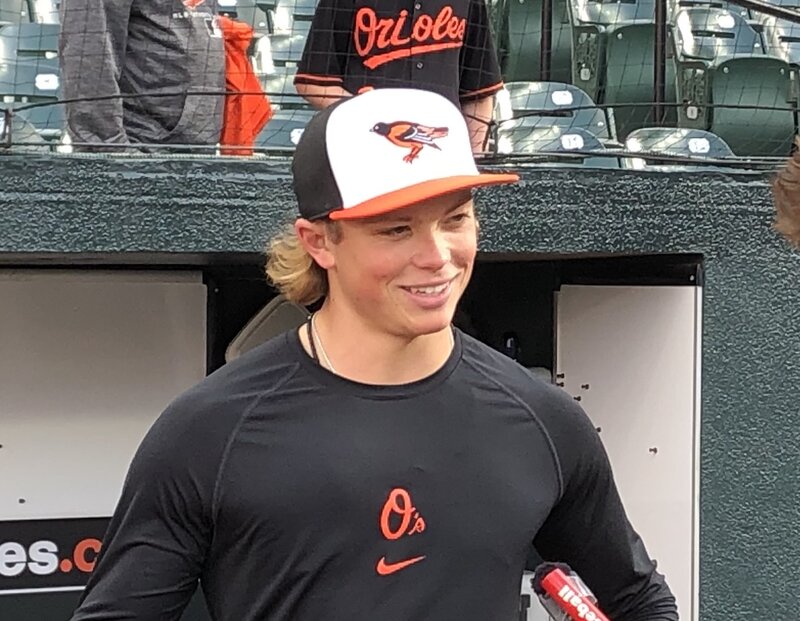During Brandon Carr’s press conference this week, Ravens defensive coordinator Dean Pees was recalling how he’d sent a text message to John Harbaugh after the latest defensive signing was made when the head coach interjected.
“I got a text from Marty [Mornhinweg], too, by the way,” said Harbaugh about his offensive coordinator. “He thought it was a good signing, too — just for the record. We’ve got some work to do over there, too.”
That’s an understatement as general manager Ozzie Newsome has spent lucrative dollars and most of his salary-cap space to revamp a defense that still finished in the top 10 of most significant statistical categories last season despite its well-documented problems down the stretch. Meanwhile, an offense that ranked in the bottom half of the NFL in virtually everything in 2016 has last four starters and has added only 32-year-old running back Danny Woodhead, who is an intriguing talent but coming off a major knee injury.
Some have attempted to skew the 2016 narrative by pointing to a 27-point scoring output and the late defensive collapse in Pittsburgh on Christmas Day as justification for focusing on the defense this offseason, but that anecdotal evidence clouds the truth. The offense played at a high level only a few times all year while the defense — flawed as it was when cornerback Jimmy Smith wasn’t on the field — was the bigger reason why the Ravens were still in contention in Week 16. That’s not to say that improvements weren’t warranted on the defensive side — which still could use another edge rusher — but the offense was summarily broken all year and has only gotten worse since the season finale in Cincinnati. You can certainly be excited about the re-signing of nose tackle Brandon Williams and the additions of safety Tony Jefferson and Carr, but it’s fair to ask if some of those resources might have been better served addressing the offense.
To be clear, we know the start of the season is more than five months away, and Newsome and the Ravens are aware that they still have much work to do on that side of the ball. But with the first and second waves of free agency now in the books, Baltimore has fewer remaining channels — with the draft being the biggest one — to not only replace departed starters but find ways to markedly improve the offense. Of course, the margin for error is smaller without a dynamic offensive playmaker on which to lean.
Harbaugh sent a loud signal that the Ravens want to get back to running the ball at a high level by hiring senior offensive assistant and ground-game guru Greg Roman, but they need the horses in the trenches to do it. Otherwise, the offense will inevitably revert to Joe Flacco throwing more than 40 times per game, and we’ve seen how that’s worked out since Super Bowl XLVII.
The biggest objective must be to address the offensive line after the departure of right tackle Rick Wagner and the trade of center Jeremy Zuttah to San Francisco. Whether you believe Detroit overpaid for Wagner or not, replacing an above-average right tackle without meaningful drop-off will be very difficult unless new offensive line coach Joe D’Alessandris has a trick up his sleeve.
Moving on from the underwhelming Zuttah wasn’t shocking, but they have to replace him with someone better or at least as good. There’s been little chatter about former New York Jet Nick Mangold to this point, and even if the Ravens eye a draft prospect such as Ethan Pocic from LSU, there are no guarantees of landing him in the second or third round. The Ravens could consider an internal candidate, but neither John Urschel nor Ryan Jensen inspire much confidence after their respective 2016 campaigns.
Finding a fullback to replace 2016 Pro Bowl selection Kyle Juszczyk shouldn’t be too difficult, but — like with Wagner — it may not be easy to do it without some drop-off.
Then, there’s wide receiver, that position we’ve discussed this time of year on an annual basis.
Baltimore lost its top two possessions receivers in Steve Smith and Kamar Aiken and elected not to sign any free-agent wideouts from a top tier that included Alshon Jeffery and Terrelle Pryor. Perhaps the next Derrick Mason, Anquan Boldin, or Smith will be acquired in the coming weeks, but one can only look to 2013 and 2015 as recent examples of the Ravens being underprepared at that position and it hurting them substantially. Even looking past the organization’s poor track record with drafting receivers, relying heavily on a rookie wideout is a risky proposition for any team.
You might be willing to give the Ravens the benefit of the doubt along the offensive line — after all, Wagner was mostly an unknown three years ago — but skepticism at wide receiver is justified, whether it’s March or September.
It’s been interesting to see how the offseason has played out to this point, starting with Harbaugh’s decision to retain Mornhinweg as his offensive coordinator despite showing little improvement taking over for the fired Marc Trestman. The team’s brass spoke at length at the season-ending press conference about needing to do whatever it takes to help Flacco play better in 2017, but a below-average offense from a year ago is currently standing at a net loss, putting heavy pressure on the front office and scouting department to nail next month’s draft and to find an under-the-radar free agent or two while also hoping that internal options take significant steps forward.
Otherwise, the Ravens will be needing a 2000-like performance from its revamped defense to have a real shot at getting back to the playoffs in 2017.
Yes, there’s plenty of time left, but many boxes remain unchecked.










